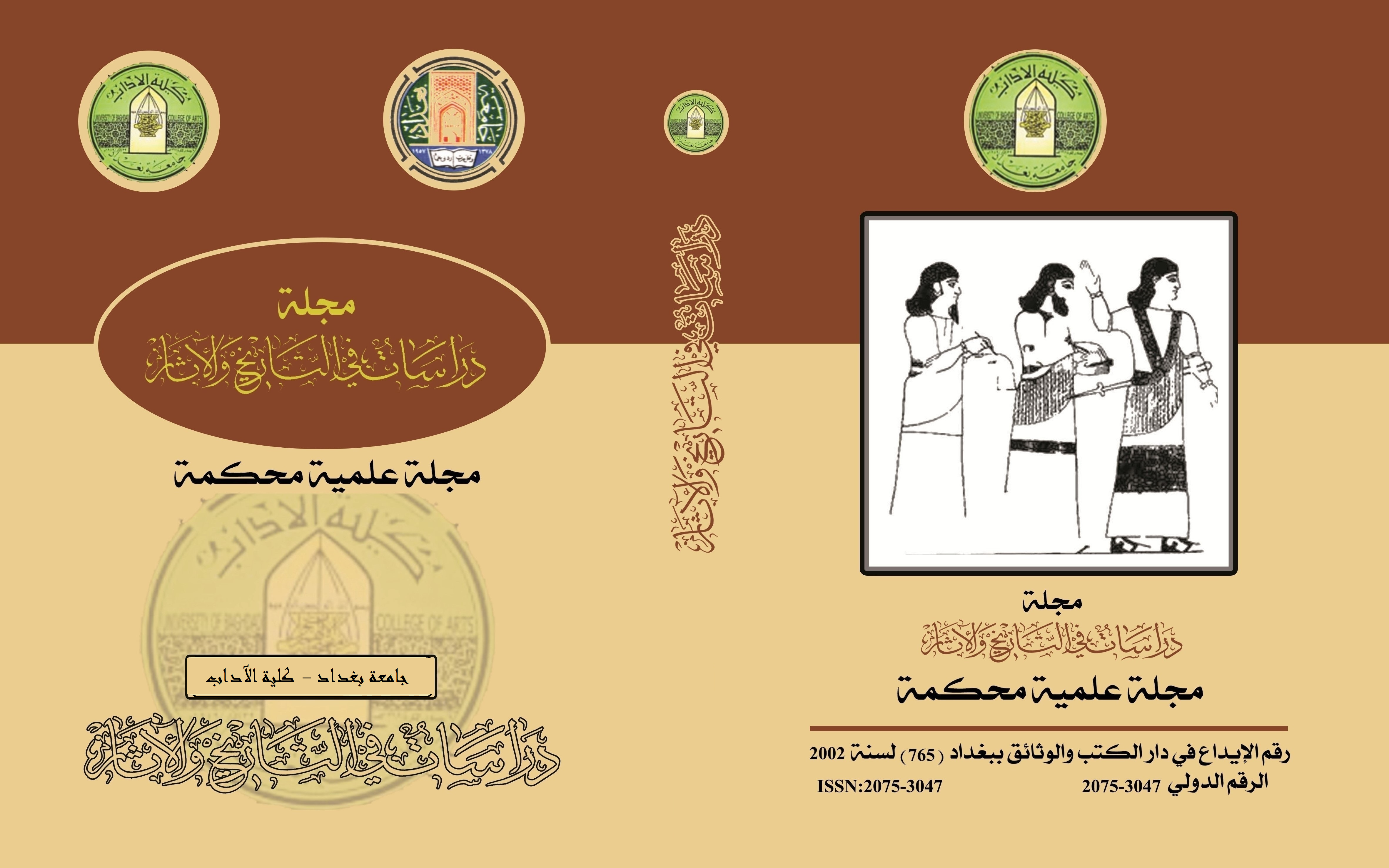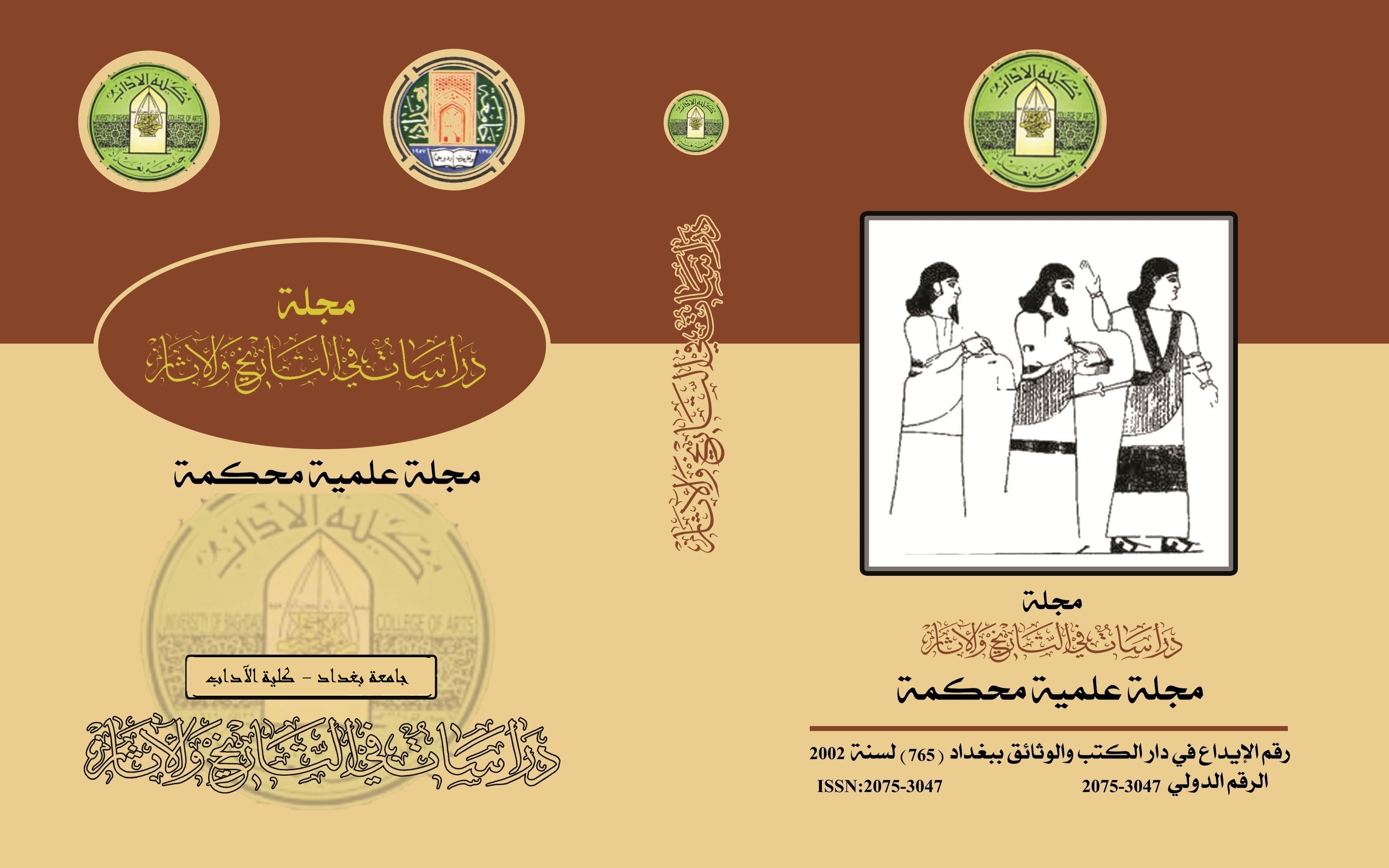سياسة النيبال من عام 1768 حتى نهاية حكم جانغ بهادور كونوار 1877
DOI:
https://doi.org/10.65074/9hep4p80الكلمات المفتاحية:
النيبال، غوركا، الشاه، بريطانيا، بهادور، راناالملخص
سلط هذا البحث الضوء على النيبال، التي عانت منذ بداية نشأتها العديد من المشاكل. إذ تميز تاريخها الحديث بتيارات أيديولوجية عديدة، أحدها النظام الملكي، الذي حكم النيبال بسلسلة من الحكام بالوراثة. ولكن بسبب الحروب المستمرة بينهم، سهلت على غزوها من قبل مملكة الغوركا، بقيادة الملك بريثفي نارايان شاه الذي سيطر على طريق التجارة المربح بين التبت وكاتماندو، وهو أحد أهم الأهداف الرئيسية لحملاته العسكرية. وأصبح أول ملك للنيبال، وللنظام الملكي تعبير سياسي مركزي منذ إنشاء الدولة النيبالية القومية عام 1768 بغزو وادي كاتماندو. وبعد وفاة نارايان توقفت الأعمال العسكرية، وضعفت النيبال. وسرعان ما انخرطت أسرة الشاه في صراع طويل على السلطة، إستغلته جمعية اللوردات التي تنافست من أجل الوصول إلى منصب رئيس الوزراء أو الوصي على العرش. وكان جميعهم من رؤساء الأسر النبيلة المهمة في الغوركا. وبلغ الصراع ذروته بظهور جانغ بهادور كونوار عام 1846، الذي أدخل نظام رئاسة الوزراء الوراثي. وهكذا ترسخ جهاز الدولة بثقافة بيروقراطية حددها نظام المحسوبية الذي حشد لمبادئ القرابة والطائفة. وكان أحد أهم الأهداف الرئيسية المراد تحقيقها في البحث؛ هي أسباب ونتائج غزو وادي كاتماندو؟ وكيف تم تأسيس إمبراطورية غوركا على يد عائلة الشاه في ستينيات القرن الثامن عشر عام 1768. وكان هذا بمثابة نقطة بداية التحول في تاريخ النيبال الحديث، الذي أثر بشكل كبير عليها لسنوات. وحدثت نقطة تحول رئيسية أخرى في منتصف القرن التاسع عشر، والتي كانت الهدف الثاني من البحث. وهي ماهية الظروف السياسية والعامة المتدهورة لنظام الشاه؟ وكيف سمحت لجانغ بهادور وعائلته ( رانا )، بتأسيس "نظام رؤساء الوزراء الوراثيين" عام 1856، وتداعيات هذا النظام وآثاره؛ حتى وفاة بهادور عام 1877 نهاية الدراسة؟ واستخدمت هذه الدراسة أساليب البحث التاريخية، والمنهج الوصفي لتحقيق أهداف البحث والإجابة على الأسئلة ذات الصلة، ولوصف الأحداث، والأسباب، وتأثيرها، ونتائجها. وتم جمع البيانات، وتفسيرها، وتحليلها لتمكين الدراسة من التوصل إلى استنتاجات حول قضايا وجوانب مختلفة.
المراجع
الوثائق والكتب الوثائقية المنشورة ، الأرشيفات، التقارير، والسجلات الرسمية لحكومة الهند البريطانية:-
- Carter Center, Final Report, Political Transition Monitoring in Nepal, 2009-2014, Jimmy Carter Former U.S. President, Founder, The Carter Center, 2014.
-Centre, Catalog Record: Nepal's experiments in constitutionalism, Hathi Trust Digital Library, Kathmandu, 2007.
- Internet Archive, History of Nepal, The Thakuri Dynasty, Wayback Machine, 13 Jun 2002 - 6 May 2002.
- Keesing’s Contemporary Archives, Vol. No. VI, Keesing’s Bristol, (London: Keesing’s Publications Ltd., 1943-1946).
- Khatiwoda, Rajan, Cubelic, Simon, &others, (eds.),The Mulukī Ain of 1854: Nepal’s First Legal Code, Documenta Nepalica, Book Series, Heidelberg University Publishing (heiUP), Heidelberg, 2021.
-Manandhar, Vijay Kumar, A documentary history of Nepalese quinquennial missions to China, 1792-1906,Adroit Publishers, 2001.
-Plumb, J. H., Wiener, Joel H.,(eds.), Great British: Foreign policy and the Span of Empire 1689- 1971: A Documentary History, Vol. 3, 2nd. ed., New York: Chelsea House Publishers, McGraw-Hill, 1972.Wiener, Joel H., compiler.
-Singh, Haris chandra Lal, Principal Records of Nepal: A collection of important facts and events of Nepal in the chronological order, Published by Satish Singh, 1985.
- T.H. McGuffie, Report on The Military: Papers of Field Marshal Sir George Nugent, Bart. 1757–1849, In the Royal United Service Institution Library Bulletin of the Institute of Historical Research, Oxford Academic, Oxford University Press, Volume 21, Issue 64, pp. 225–232, May 1948, p. 229. Published:12 October 2007.
-The electronic open access version of this work is permanently available on Heidelberg University Publishing’s website: https://heiup.uniheidelberg.deurn:urn:nbn:de:bsz:16-heiup-book7693doi: https://doi.org/10.17885/heiup.769
-Treaty of Peace (the Sugauli Treaty) between the British India and Nepal, 1815, published in C.U. Aitchison (ed.),Treaties and Engagements Relating to Nepal, Pt. II (Calcutta: Government of India Printing Department, 1909).
الكتب الاجنبية:-
-Bhattarai, Hari Prasad., Subedi, Jhalak, (eds.), Democratic constitution making: experiences from Nepal, Kenya, South Africa, and Sri Lanka, Nepal South Asia.
- Clay Arnold, Nepal (1923-present), Department of Government, Public Service, and International Studies, Political Science, University of Central Arkansas, , 201 Donaghey Avenue, Conway, 2021.
- Goyal, Narendra, Political History of Himalayan States- Tibet, Nepal, Bhutan, Sikkim & Nagaland Since 1947, 2nd. ed., Indermani Bajaj- Cambridge Book & Stationery, New Delhi, 1966.
- Mukherjee, Pablo, What About Postcolonial Politics in Nepal?, PhD. (ABD), Politics| New School for Social Research, Chris Crews, 2006.
- Political Structures and Processes in Nepal, Country Profiles: Nepal, Bhutan, Unit 11, Ignou The People's University, Content Digitized by eGyanKosh, Ignou, N. D..
- S. R. Osmani & B. B. Bajracharya, The Economic Development of Nepal: A Long- Term Perspective, St. Xavier's College, Nepal, March, 2007.
- Sanwal, Bhairava Dat, Nepal and the East India Company, Asia Publishing House, Bombay,1965.
- Savada, Andrea Matles, Nepal and Bhutan country studies, Area handbook series, Federal Research Division, Library of Congress, U.S. Government Printing Office: Washington, 3rd. ed.,1993.
- Shaha, Rishikesh, Ancient and Medieval Nepal, Kathmandu, 1997.
- Tyagi, Sushila, Indo-Nepalese relations 1858-1914,D. K. Publishing House, the University of California, 1974.
- Upadhyaya, Shreeram Prasad, Indo-Nepal trade relations: a historical analysis of Nepal's trade with the British India, Nirala Series Publications,1992.
- Uprety, Prem Raman, Nepal-Tibet relations, 1850-1930: years of hopes, challenges, and frustrations2nd. ed., Ratna Pustak Bhandar, 1998.
- Whelpton, John, Kings, Soldiers and Priests: Nepalese politics and the Rise of Jang Bahadur Rana, 1830-1857, Ajay Kumar Jain: Manohar Publications, New Delhi, 1991.
المقالات والاوراق المنشورة:-
-Adhikari , Radheshyam (Member of Parliament of Nepal), Nepal’s Experiences with the Abolition of Death Penalty, 4 March, 1998.
- Adhikari, Dhruba Raj, “A Small State Between Two Major Powers: Nepal’s Foreign Policy Since 1816,” Journal of International Affairs, vol. 2 (1), pp.43-74, Tribhuvan University, Kathmand, July2018.
-B. C. Upreti, “Nationalism In South Asia : Trends And Interpretations”, The Indian Journal of Political Science, Vol. 67, No. 3, pp. 535-544, (JULY - SEPT., 2006).
- Bhattacharjee, Dhrubajyoti & Meena, Rakesh Kumar, “The Rise and Fall of the Shahs of Nepal,” SSRN Electronic Journal, pp. 1-7, May 2008.
- Blei, Tone, "The Decade of Violent Destabilisation in Nepal: An Analysis of its Historical Background and Trajectory", Article, Occasional Papers in Sociology and Anthropology, Vol. 10, pp.(46-106 ), 2007.
- Bureau of South and Central Asian Affairs, Background Note: Nepal, January,Report, General Survey, 2009.
- Dharan, Sunsari, Report on Political History of Nepal, Tribhuvan University, Mahendra Multle Campus, Department of Management, March 2022.
- Gautam, Bhim Lal, “Language politics in Nepal: A socio-historical overview”, Journal of World Languages, 7(2), pp.355–374: January 12, 2022.
- Thapa, Kanak Bikram, Religion and Law in Nepal, Brigham Young University Law School, Vol. 20, Issue 3, Article 12, pp. 921- 930, 2010.
الرسائل والاطاريح:-
- Drucza,Kristie, Social Inclusion and Social Protection in Nepal, A thesis submitted for the degree of Doctor of Philosophy, School of Humanities and Social Sciences, Deakin University, 2016.
- Ismail, Feyzi, The consequences of co-option: NGOs, The left and social change in Nepal, Thesis submitted for the degree of PhD in Development Studies, Department of Development Studies School of Oriental and African Studies, University of London, 2013.
- Smith, Thomas Burns, The Ideology of Nepal's Panchayati Raj, A Thesis Submitted to the Faculty of the Department of Government, Master of Arts in the Graduate College, The University of Arizona, 1967.
الموسوعات الحرة:-
-- Unification, expansion and consolidation (1768–1951), Main article: Kingdom of Nepal, The Free Encyclopedia, https://en.wikipedia.org/wiki/Nepal
-- History Of Nepal,https://mofa.gov.np/.
التنزيلات
منشور
إصدار
القسم
الرخصة

هذا العمل مرخص بموجب Creative Commons Attribution 4.0 International License.
:حقوق الطبع والنشر والترخيص
بالنسبة لجميع البحوث المنشورة في مجلة دراسات في التاريخ والآثار، يحتفظ الباحثون بحقوق النشر. يتم ترخيص البحوث بموجب ترخيص Creative Commons CC BY 4.0 المفتوح ، مما يعني أنه يجوز لأي شخص تنزيل البحث وقراءته مجانًا. بالإضافة إلى ذلك ، يجوز إعادة استخدام البحث واقتباسه شريطة أن يتم الاستشهاد المصدر المنشور الأصلي. تتيح هذه الشروط الاستخدام الأقصى لعمل الباحث وعرضه.
:إعادة إنتاج البحوث المنشورة من الناشرين الآخرين
من الضروري للغاية أن يحصل الباحثون على إذن لإعادة إنتاج أي بحث منشورة (أشكال أو مخططات أو جداول أو أي مقتطفات من نص) لا يدخل في نطاق الملكية العامة أو لا يملكون حقوق نشرها. يجب أن يطلب الباحثون إذنًا من مؤلف حقوق النشر (عادة ما يكون الناشر).
يطلب الإذن في الحالات التالية:
بحوثك الخاصة المنشورة من قِبل ناشرين آخرين ولم تحتفظ بحقوق النشر الخاصة بها.
مقتطفات كبيرة من بحوث أي شخص أو سلسلة من البحوث المنشورة.
استخدم الجداول والرسوم البيانية والمخططات والمخططات والأعمال الفنية إذا لم يتم التعديل عليها.
الصور الفوتوغرافية التي لا تملك حقوق لنشرها.
لا يطلب الإذن في الحالات التالية:
إعادة بناء الجدول الخاص بك مع البيانات المنشورة بالفعل في مكان آخر. يرجى ملاحظة أنه في هذه الحالة يجب عليك ذكر مصدر البيانات في شكل "بيانات من ..." أو "مقتبس من ...".
تعتبر عروض الأسعار القصيرة معقولة الاستخدام العادل ، وبالتالي لا تتطلب إذنًا.
الرسوم البيانية ، الرسوم البيانية ، المخططات ، الأعمال الفنية التي أعاد الباحث رسمها بالكامل والتي تم تغييرها بشكل ملحوظ إلى درجة لا تتطلب الاعتراف.
الحصول على إذن
لتجنب التأخير غير الضروري في عملية النشر ، يجب أن تبدأ في الحصول على أذونات في أقرب وقت ممكن. لا يمكن لمجلة الآداب نشر بحث مقتبس من منشورات أخرى دون إذن.
قد يمنحك مالك حقوق الطبع والنشر تعليمات بشأن شكل الإقرار الواجب اتباعه لتوثيق عمله ؛ بخلاف ذلك ، اتبع النمط: "مستنسخ بإذن من [المؤلف] ، [كتاب / المجلة] ؛ نشره [الناشر] ، [السنة]." في نهاية شرح الجدول ، الشكل أو المخطط.



















